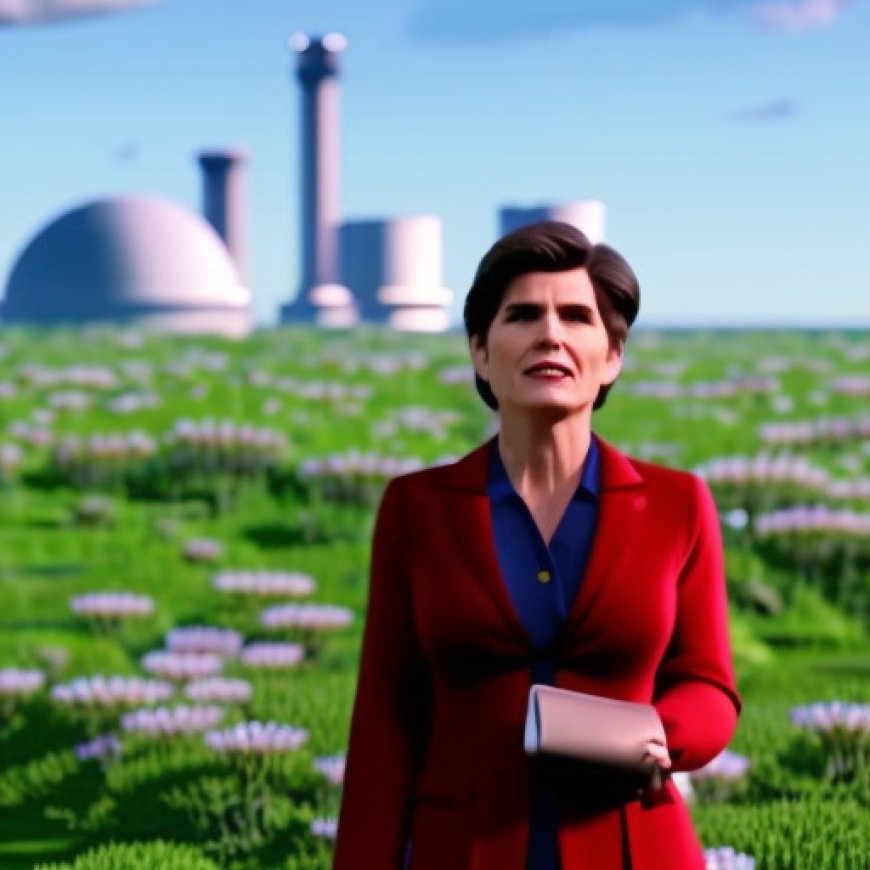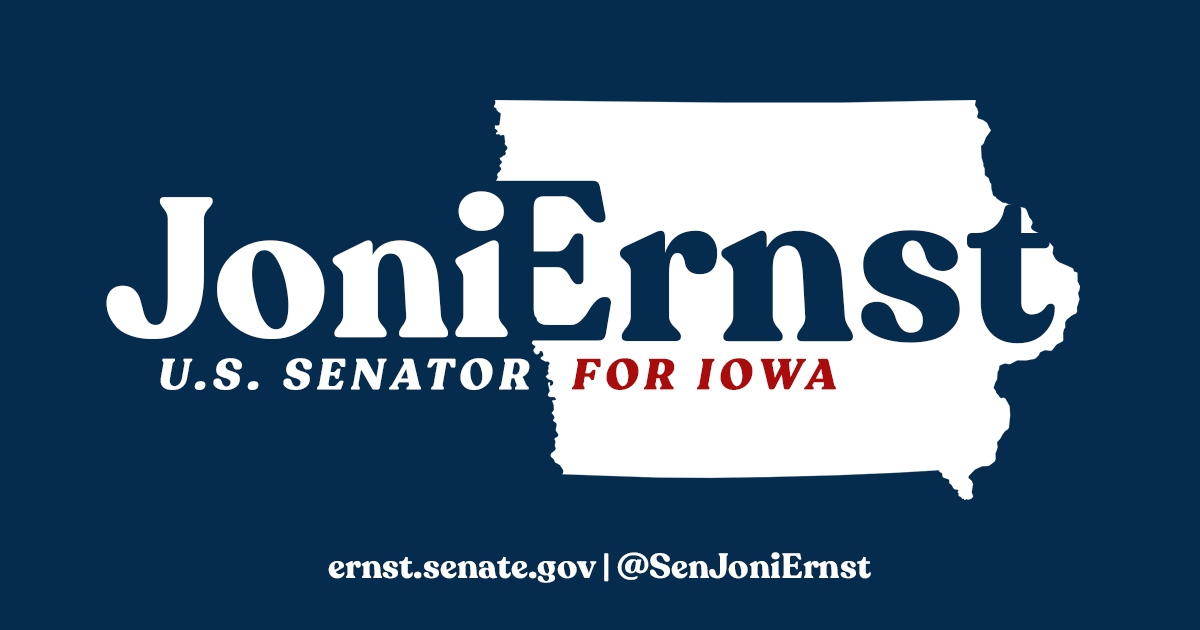Ernst Exposes Department of Energy’s ‘Green New Deal Jobs Program’ | U.S. Senator Joni Ernst of Iowa
Ernst Exposes Department of Energy’s ‘Green New Deal Jobs Program’ | U.S Senator Joni Ernst


U.S. Senator Joni Ernst Calls Out Department of Energy Secretary for Energy Conservation Claims

WASHINGTON – U.S. Senator Joni Ernst (R-Iowa) is raising concerns about Department of Energy (DOE) Secretary Jennifer Granholm’s recent statement regarding energy conservation in federal buildings. Secretary Granholm claimed that the Biden administration is “practicing what they preach” in this area. However, a new report has revealed that government buildings in Washington, D.C. are operating at only 26 percent capacity, with an average of only eight people showing up to DOE headquarters each day.
Ernst Criticizes DOE’s Approach
In response to Secretary Granholm’s statement, Senator Ernst wrote, “Your release goes on to say the administration will be ‘providing resources, opportunities for grant funding, training, and technical assistance’ to achieve the goal of ‘net-zero emissions from all federal buildings.’ This sounds more like another excuse to spend taxpayer dollars on a Green New Deal jobs program, since the Biden administration is wasting money and energy operating empty office buildings all over Washington, D.C. as bureaucrats continue working from home.”
The Public Buildings Reform Board, which conducted a survey on attendance, has reached out to the DOE for clarification but has not yet received a response. This lack of response may be due to the fact that nobody is present at the DOE headquarters.
Senator Ernst further emphasized, “If the administration is serious about practicing what it preaches on energy conservation, instead of spending more money, you could instead stop paying to heat, cool, light, and operate the ghost town of vacant buildings all around Washington, D.C. Camouflaging new government spending in green doesn’t save money or energy. You can go green without going in the red by reducing the size of unused and unnecessary government buildings. Now that’s the real green new deal for taxpayers!”
Ernst’s Request for Inventory and Answers
In order to fully understand the extent of wasted space, Senator Ernst is taking inventory and requesting information on space utilization. This information will help determine if the DOE should sell off unused space, in compliance with the Federal Assets Sale and Transfer Act.
Read the full letter here.
SDGs, Targets, and Indicators
| SDGs | Targets | Indicators |
|---|---|---|
| SDG 7: Affordable and Clean Energy | 7.3: Double the global rate of improvement in energy efficiency | No specific indicators mentioned in the article |
| SDG 11: Sustainable Cities and Communities | 11.4: Strengthen efforts to protect and safeguard the world’s cultural and natural heritage | No specific indicators mentioned in the article |
| SDG 13: Climate Action | 13.2: Integrate climate change measures into national policies, strategies, and planning | No specific indicators mentioned in the article |
| SDG 17: Partnerships for the Goals | 17.16: Enhance the global partnership for sustainable development, complemented by multi-stakeholder partnerships that mobilize and share knowledge, expertise, technology, and financial resources | No specific indicators mentioned in the article |
1. Which SDGs are addressed or connected to the issues highlighted in the article?
- SDG 7: Affordable and Clean Energy – The article discusses the Biden administration’s goal of achieving net-zero emissions from all federal buildings, which aligns with SDG 7’s focus on affordable and clean energy.
- SDG 11: Sustainable Cities and Communities – The article mentions the need to reduce the size of unused and unnecessary government buildings, which contributes to creating sustainable cities and communities.
- SDG 13: Climate Action – The article highlights the importance of energy conservation and reducing wasteful practices, which are key elements of climate action.
- SDG 17: Partnerships for the Goals – The article mentions the need for collaboration and resources to achieve the goal of net-zero emissions from federal buildings, aligning with SDG 17’s focus on partnerships for sustainable development.
2. What specific targets under those SDGs can be identified based on the article’s content?
- Target 7.3: Double the global rate of improvement in energy efficiency – The article discusses the Biden administration’s goal of achieving net-zero emissions from all federal buildings, which implies a need for improved energy efficiency.
- Target 11.4: Strengthen efforts to protect and safeguard the world’s cultural and natural heritage – While not explicitly mentioned in the article, reducing wasteful practices and promoting energy conservation can contribute to safeguarding natural resources and heritage.
- Target 13.2: Integrate climate change measures into national policies, strategies, and planning – The article emphasizes the importance of practicing what is preached regarding energy conservation, indicating a need for integrating climate change measures into policies and planning.
- Target 17.16: Enhance the global partnership for sustainable development – The article mentions the need for partnerships and resources to achieve net-zero emissions from federal buildings, aligning with the target of enhancing global partnerships for sustainable development.
3. Are there any indicators mentioned or implied in the article that can be used to measure progress towards the identified targets?
No specific indicators are mentioned or implied in the article that can be used to measure progress towards the identified targets. However, potential indicators could include energy consumption reduction in federal buildings, percentage of unused and unnecessary government buildings sold off, and the integration of climate change measures into policies and planning.
4. SDGs, Targets, and Indicators
| SDGs | Targets | Indicators |
|---|---|---|
| SDG 7: Affordable and Clean Energy | 7.3: Double the global rate of improvement in energy efficiency | No specific indicators mentioned in the article |
| SDG 11: Sustainable Cities and Communities | 11.4: Strengthen efforts to protect and safeguard the world’s cultural and natural heritage | No specific indicators mentioned in the article |
| SDG 13: Climate Action | 13.2: Integrate climate change measures into national policies, strategies, and planning | No specific indicators mentioned in the article |
| SDG 17: Partnerships for the Goals | 17.16: Enhance the global partnership for sustainable development, complemented by multi-stakeholder partnerships that mobilize and share knowledge, expertise, technology, and financial resources | No specific indicators mentioned in the article |
Copyright: Dive into this article, curated with care by SDG Investors Inc. Our advanced AI technology searches through vast amounts of data to spotlight how we are all moving forward with the Sustainable Development Goals. While we own the rights to this content, we invite you to share it to help spread knowledge and spark action on the SDGs.
Fuente: ernst.senate.gov

Join us, as fellow seekers of change, on a transformative journey at https://sdgtalks.ai/welcome, where you can become a member and actively contribute to shaping a brighter future.







